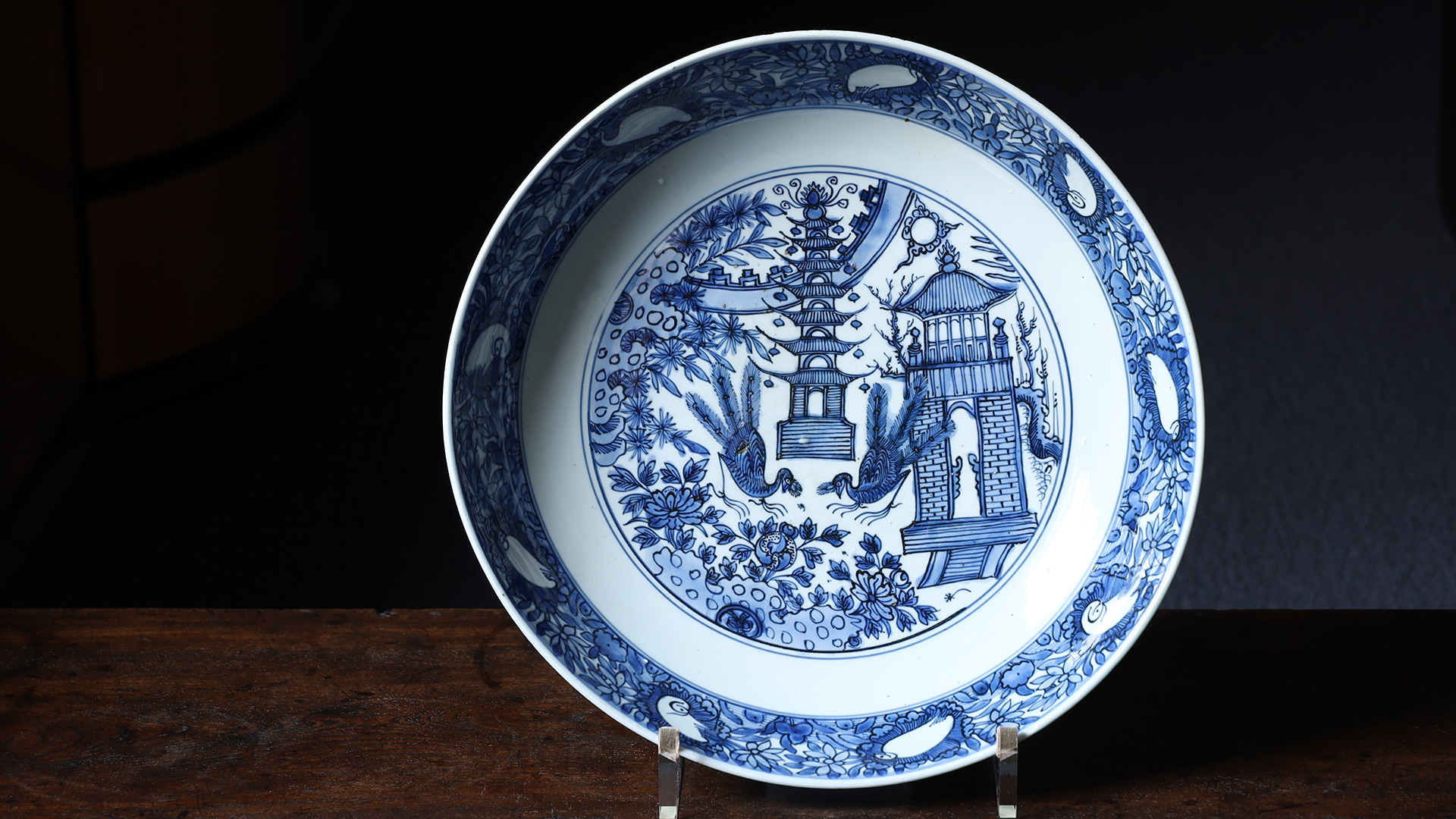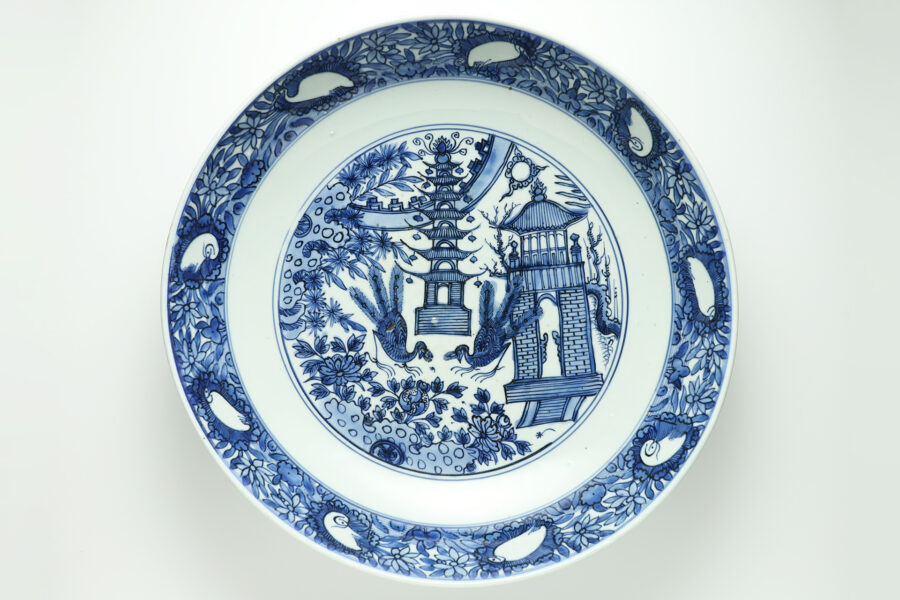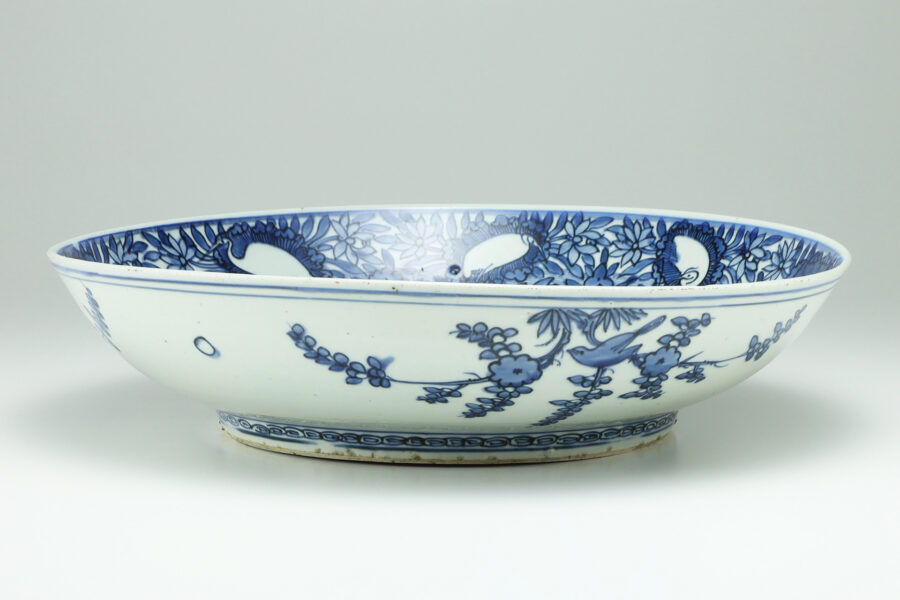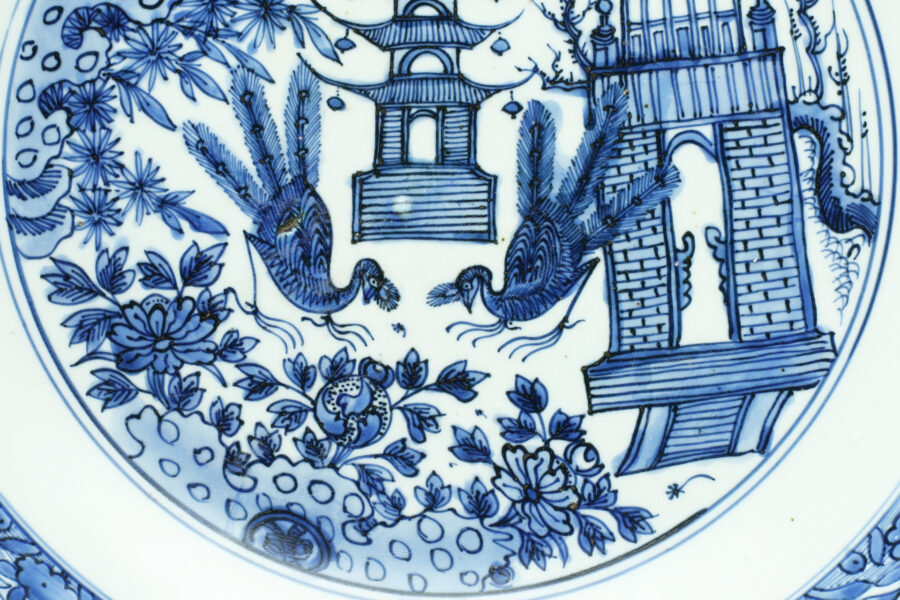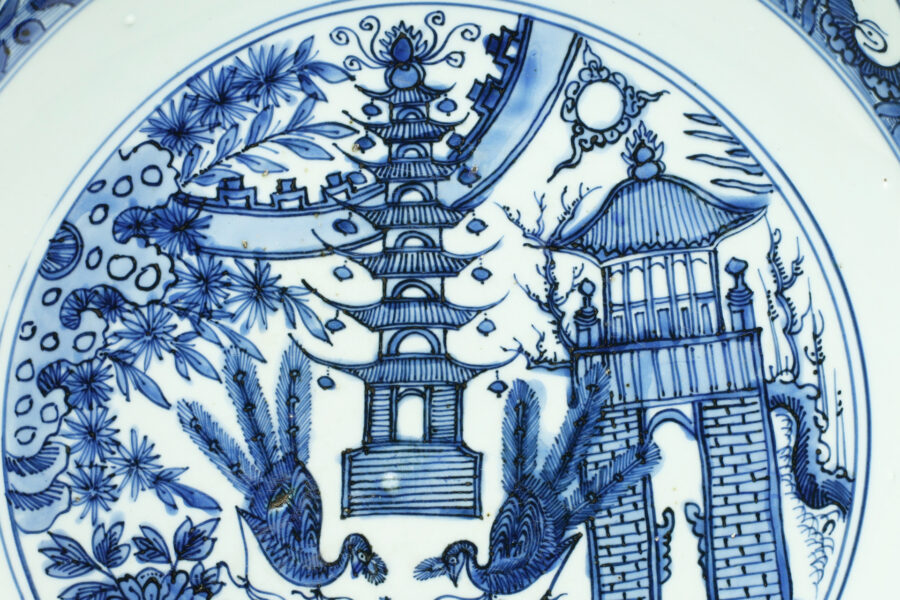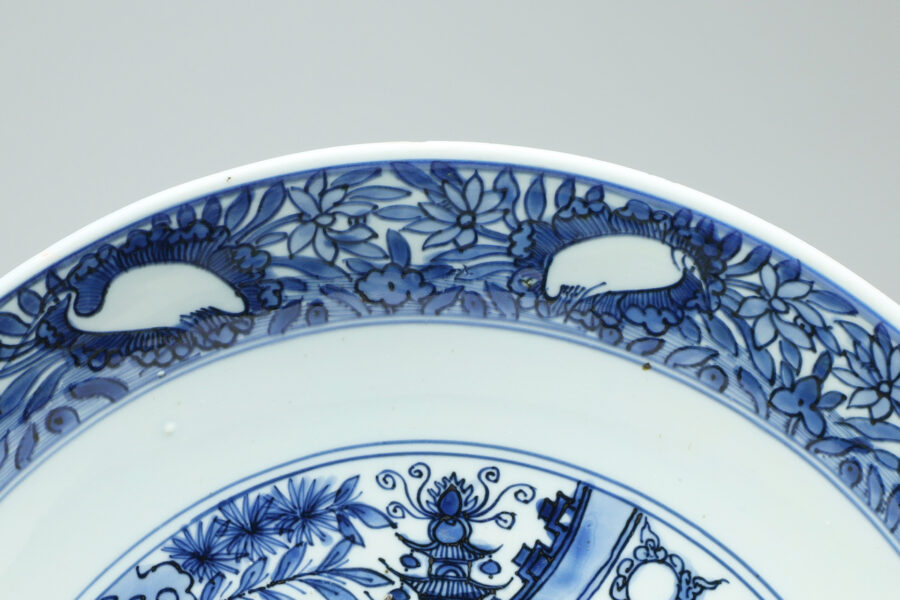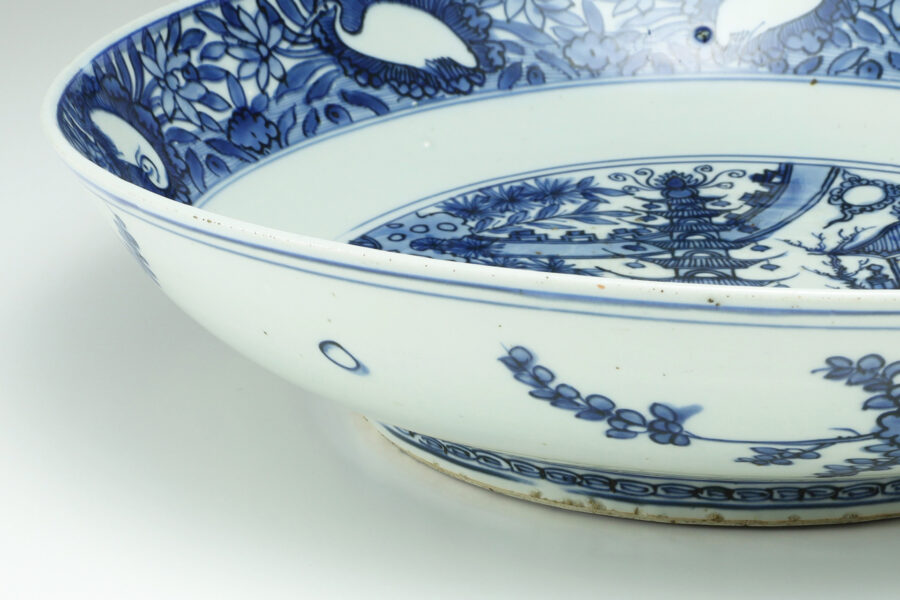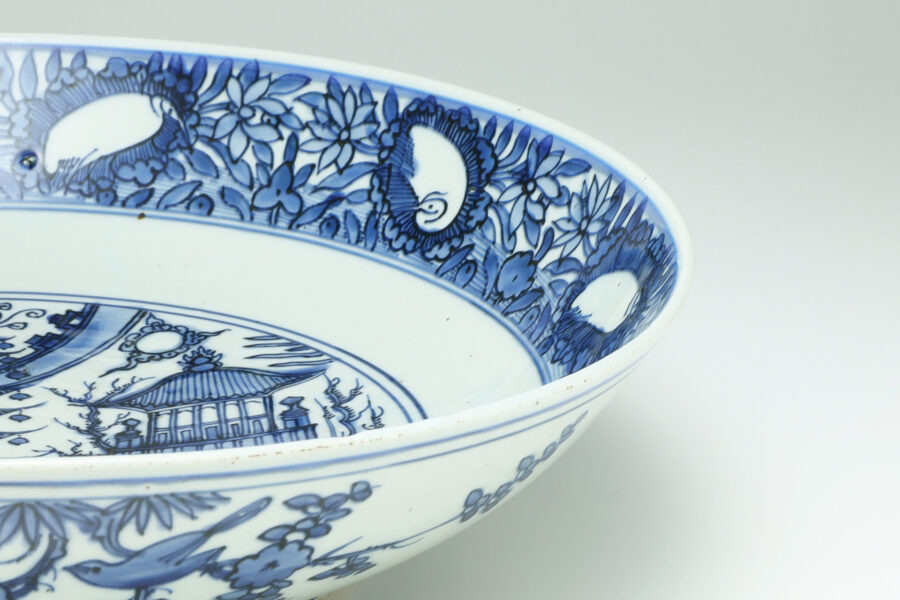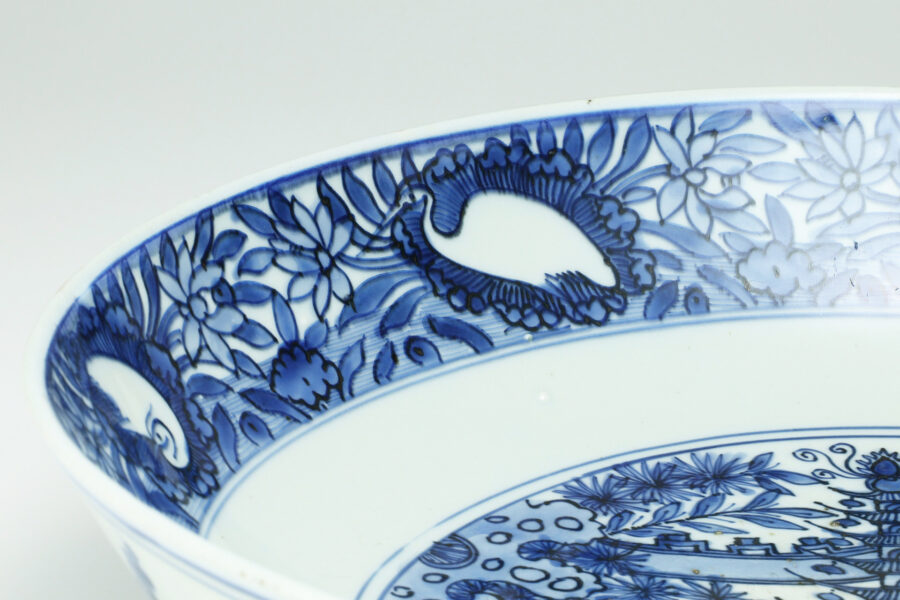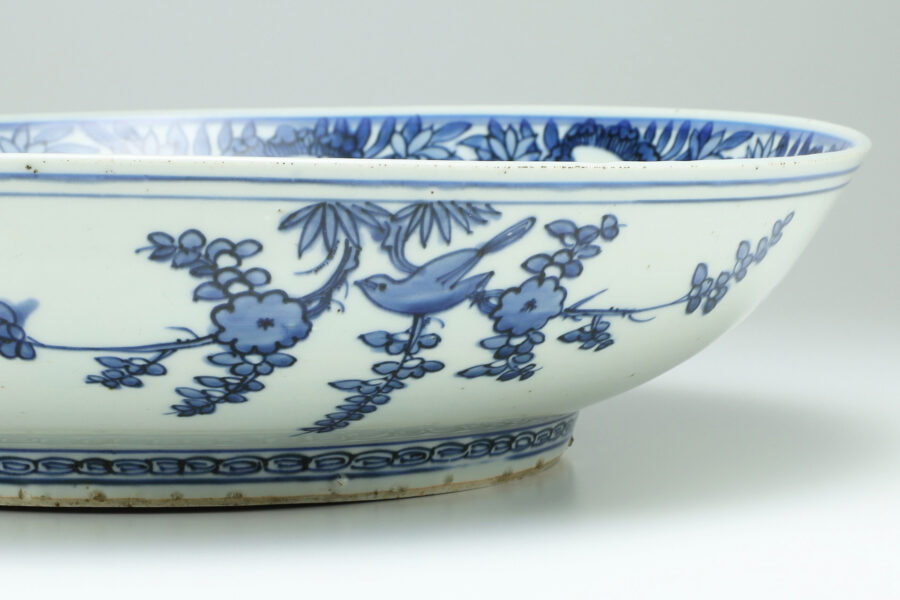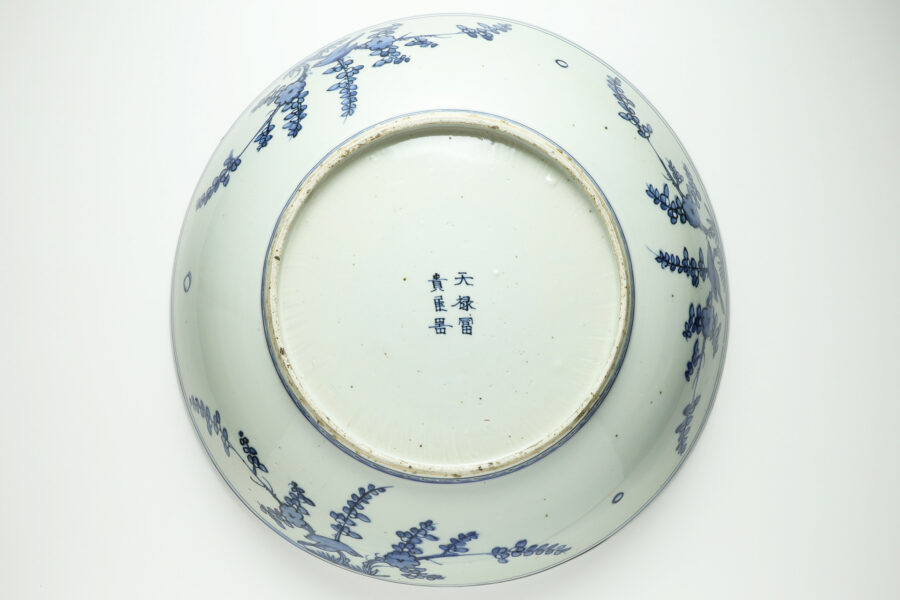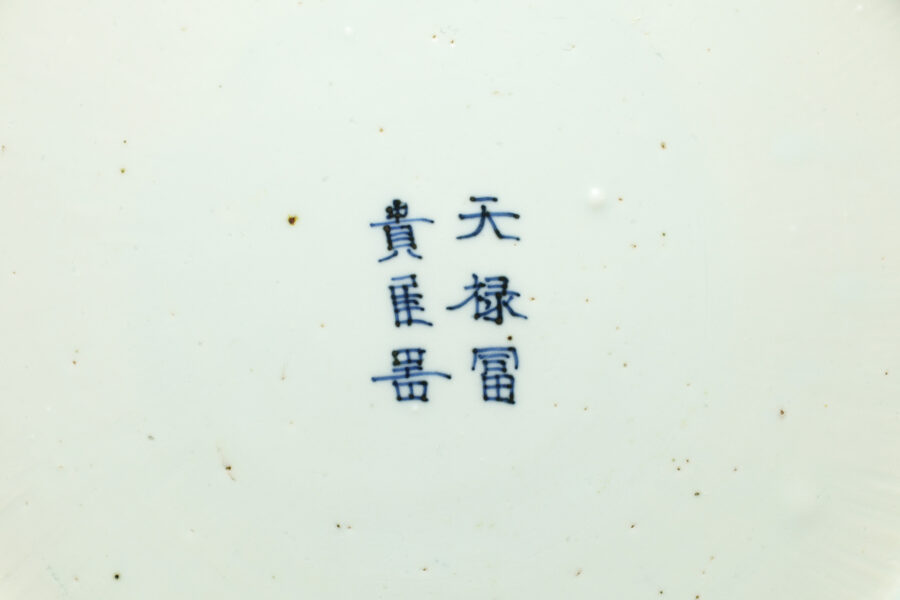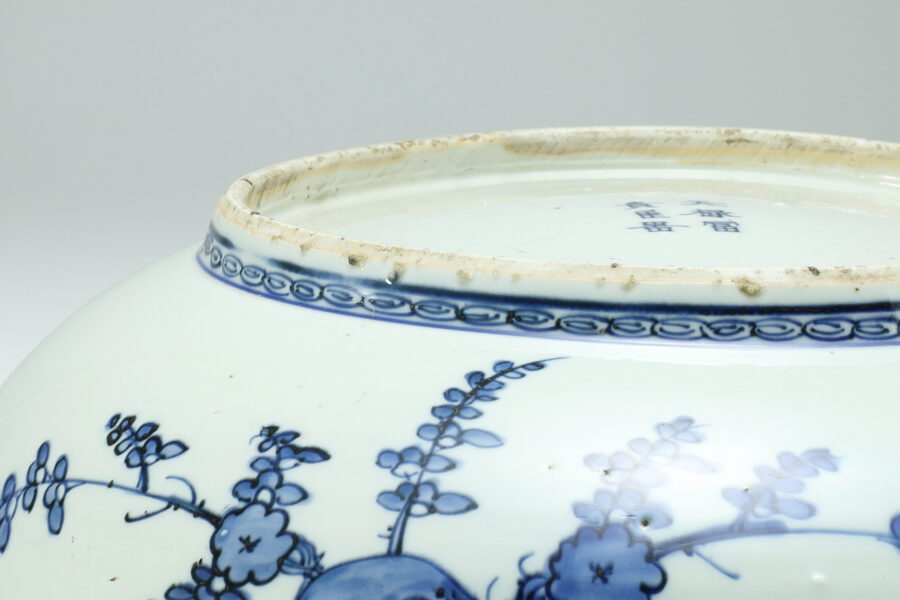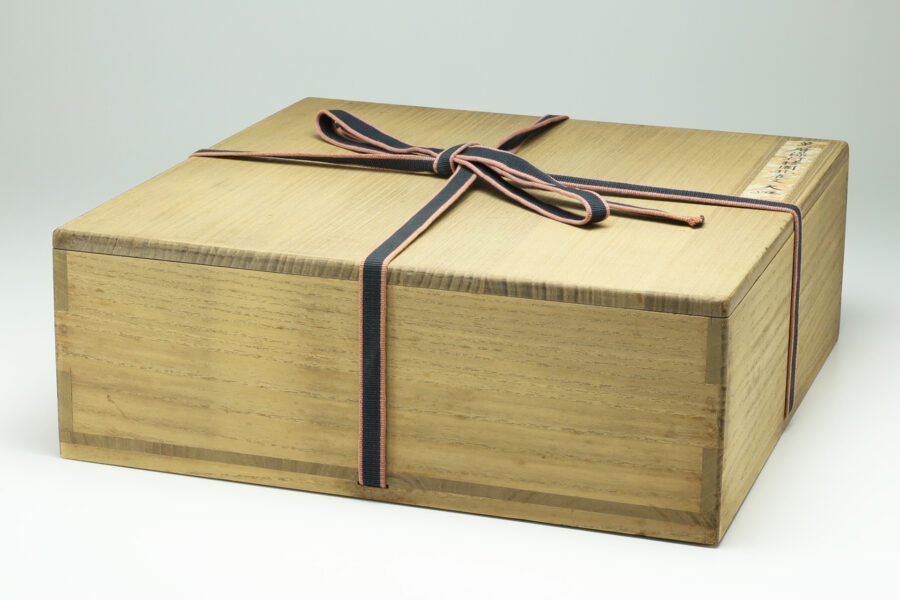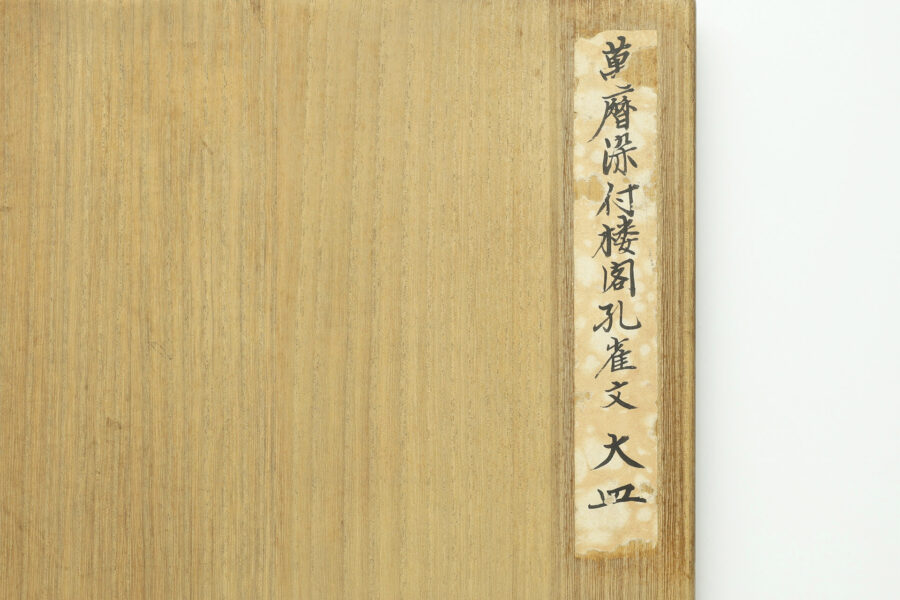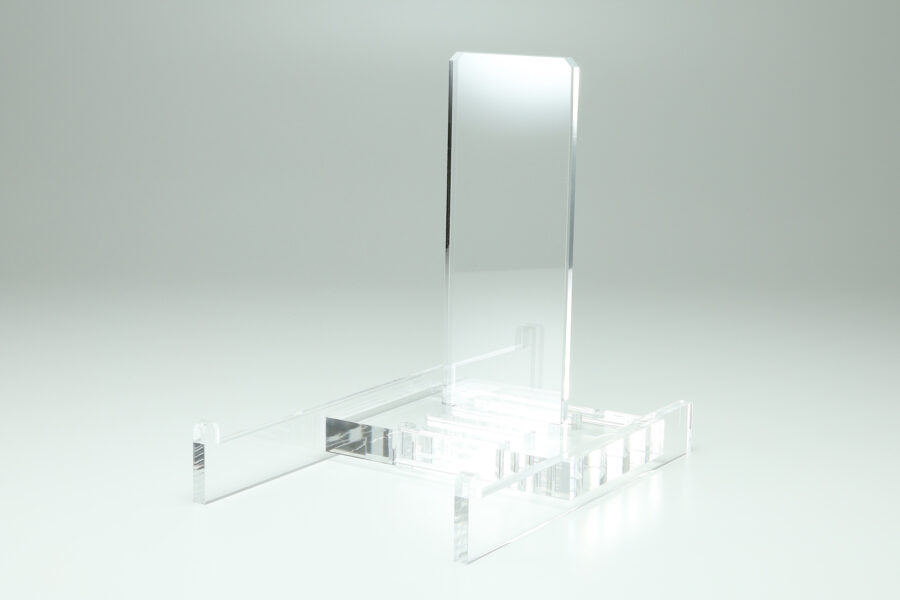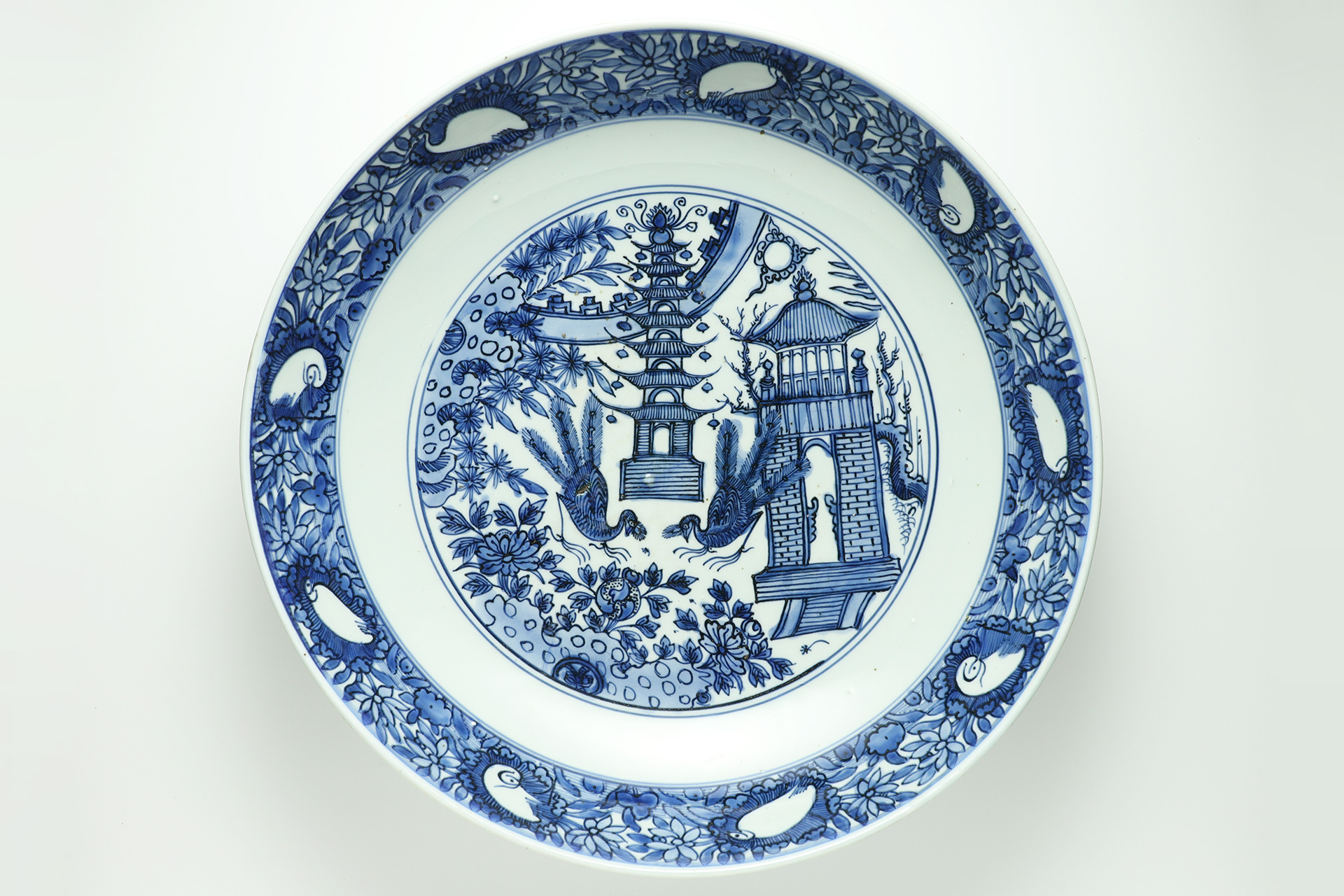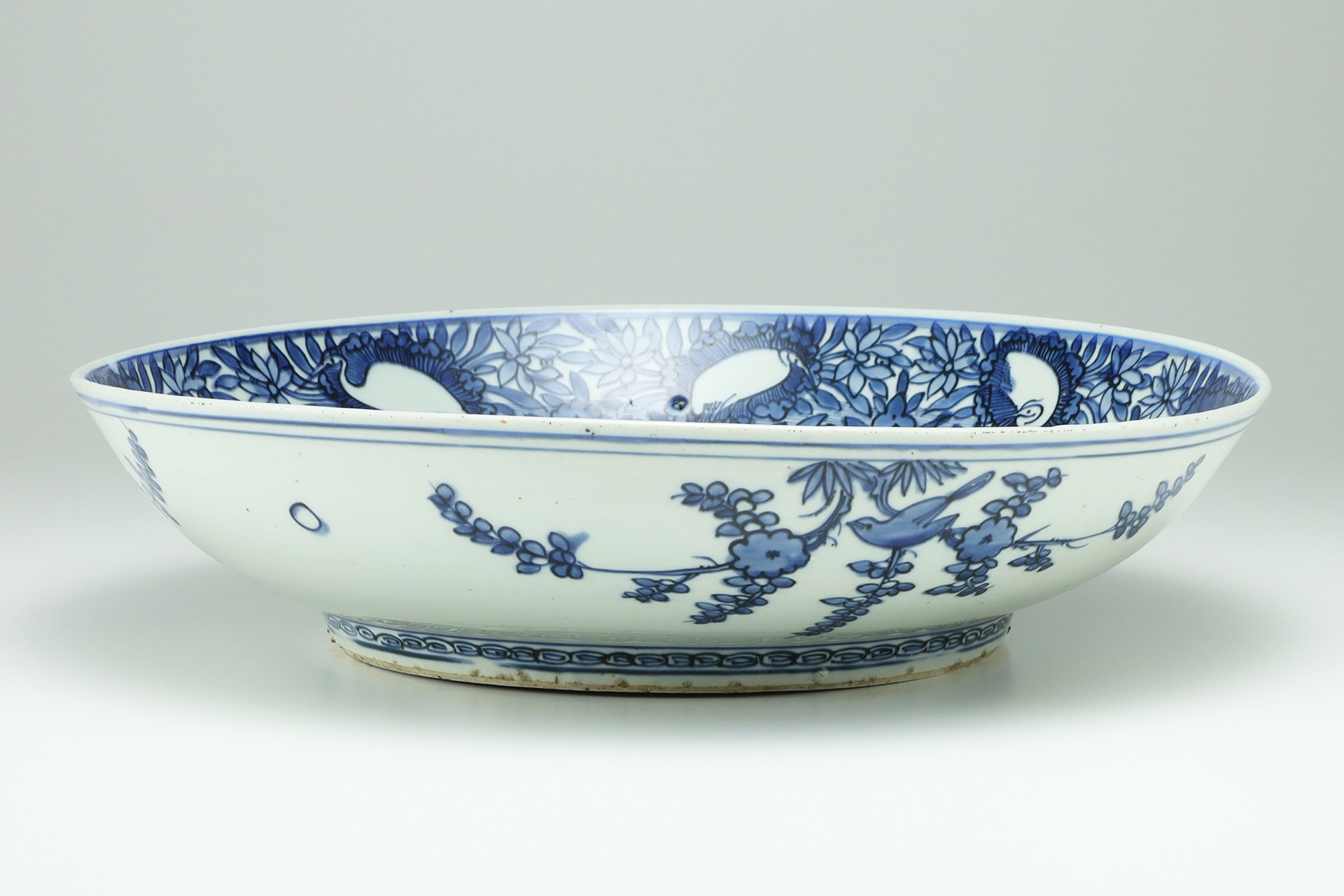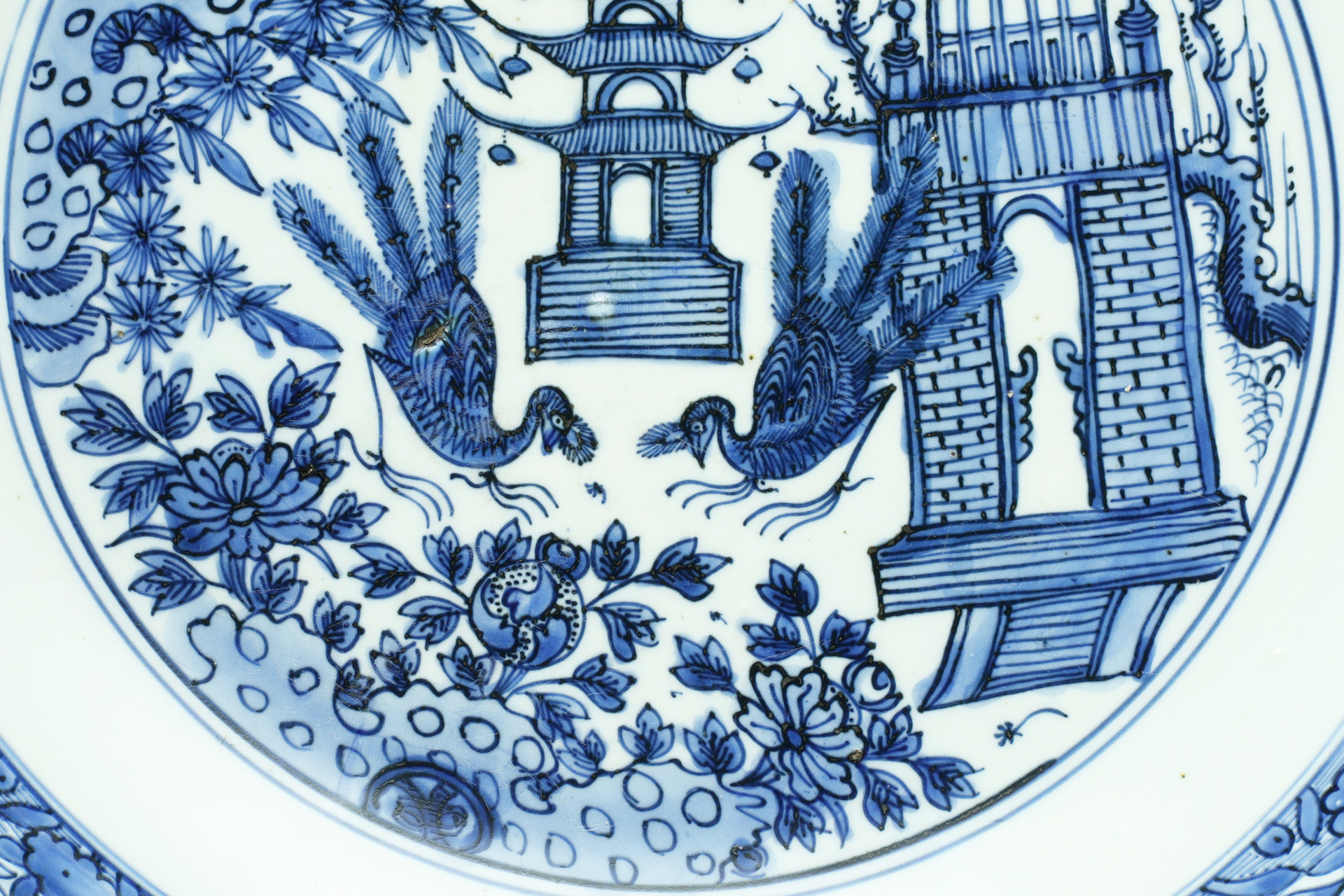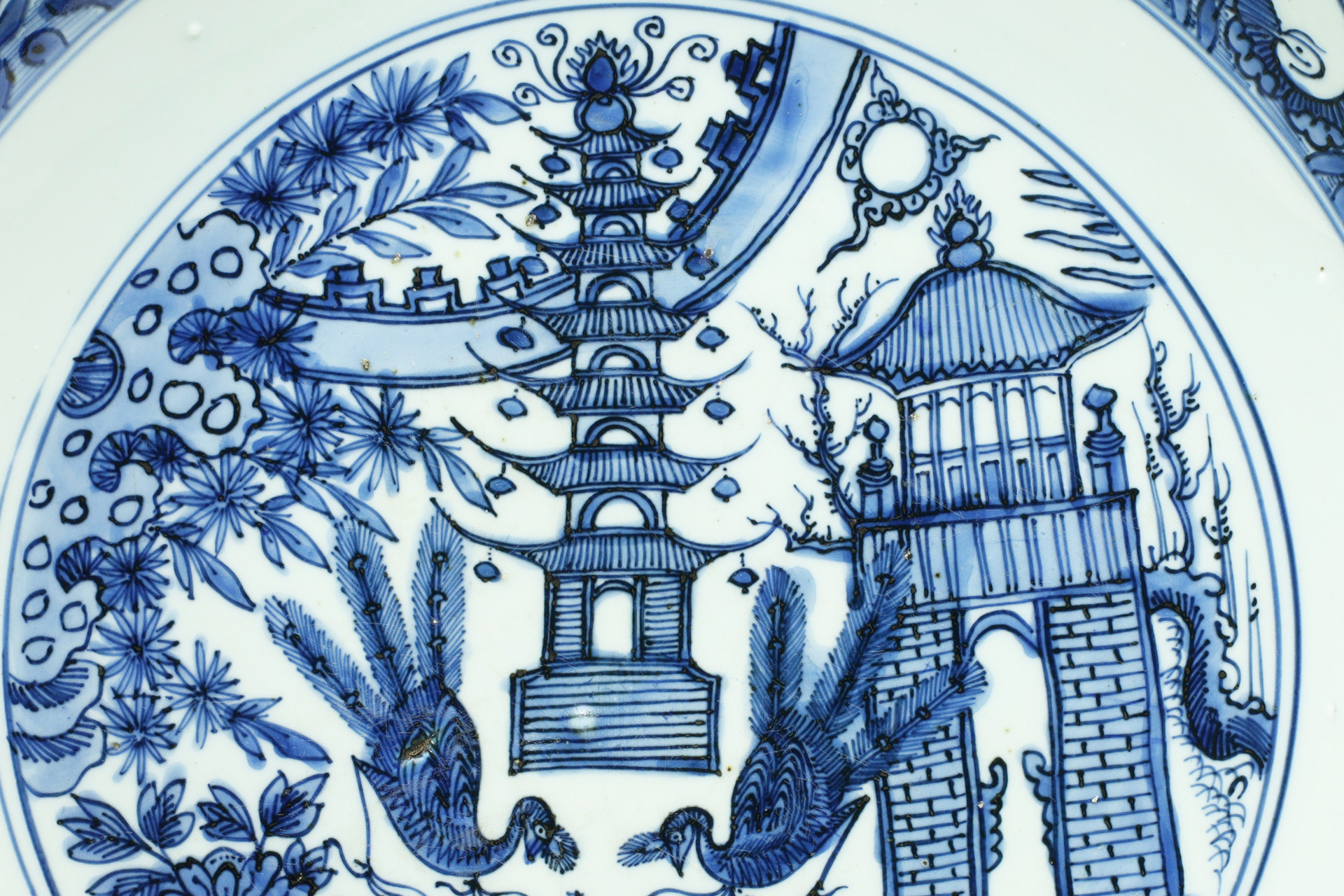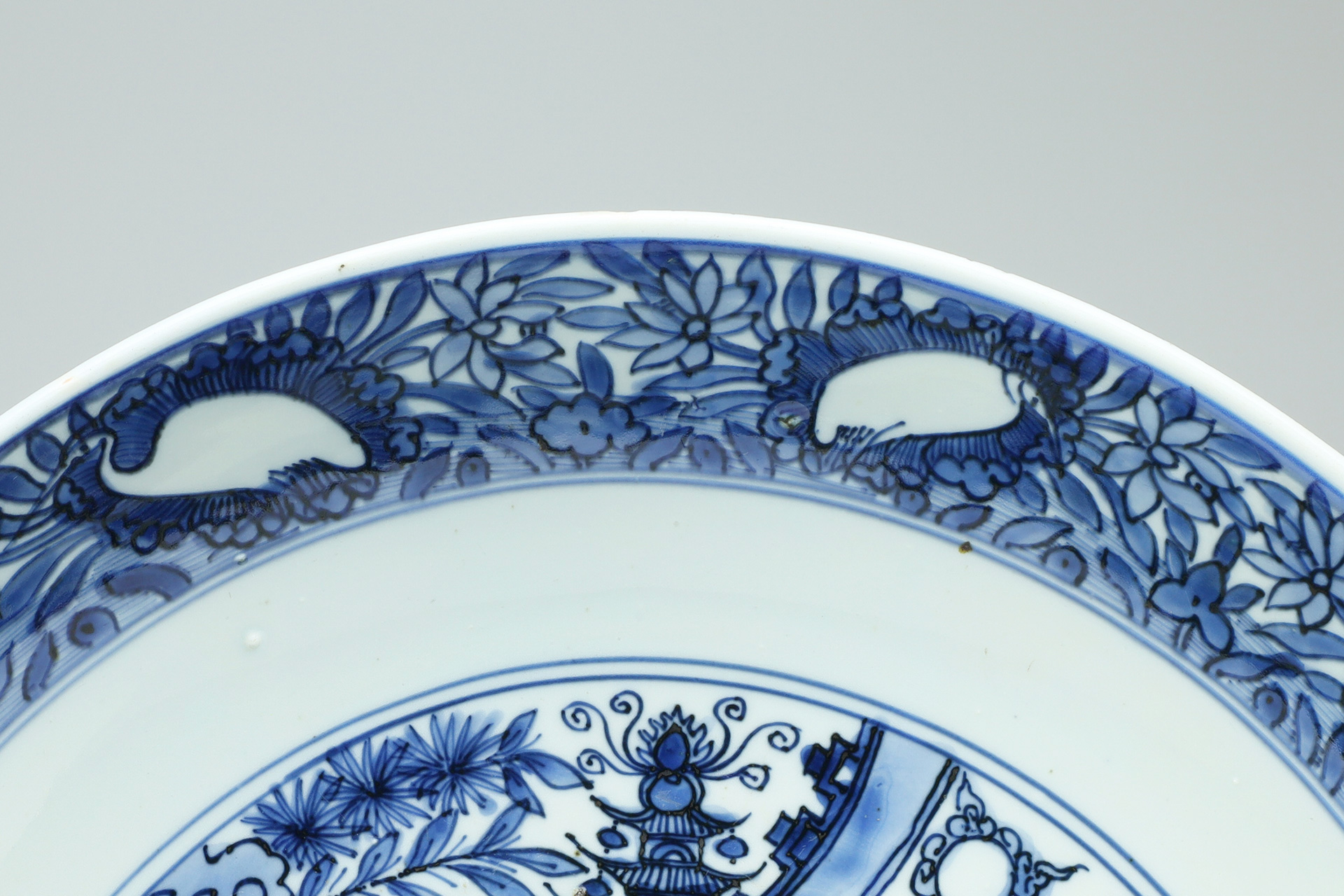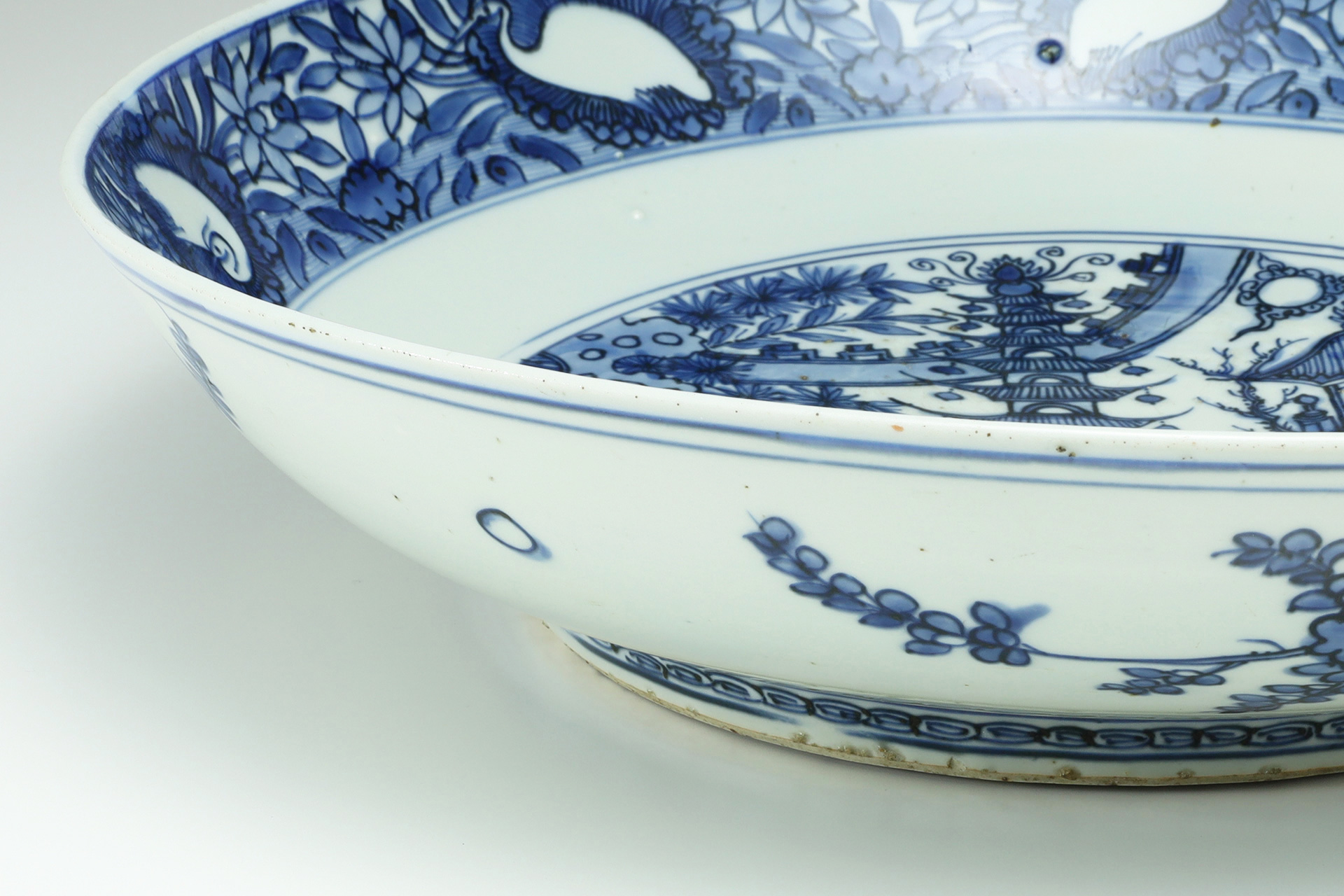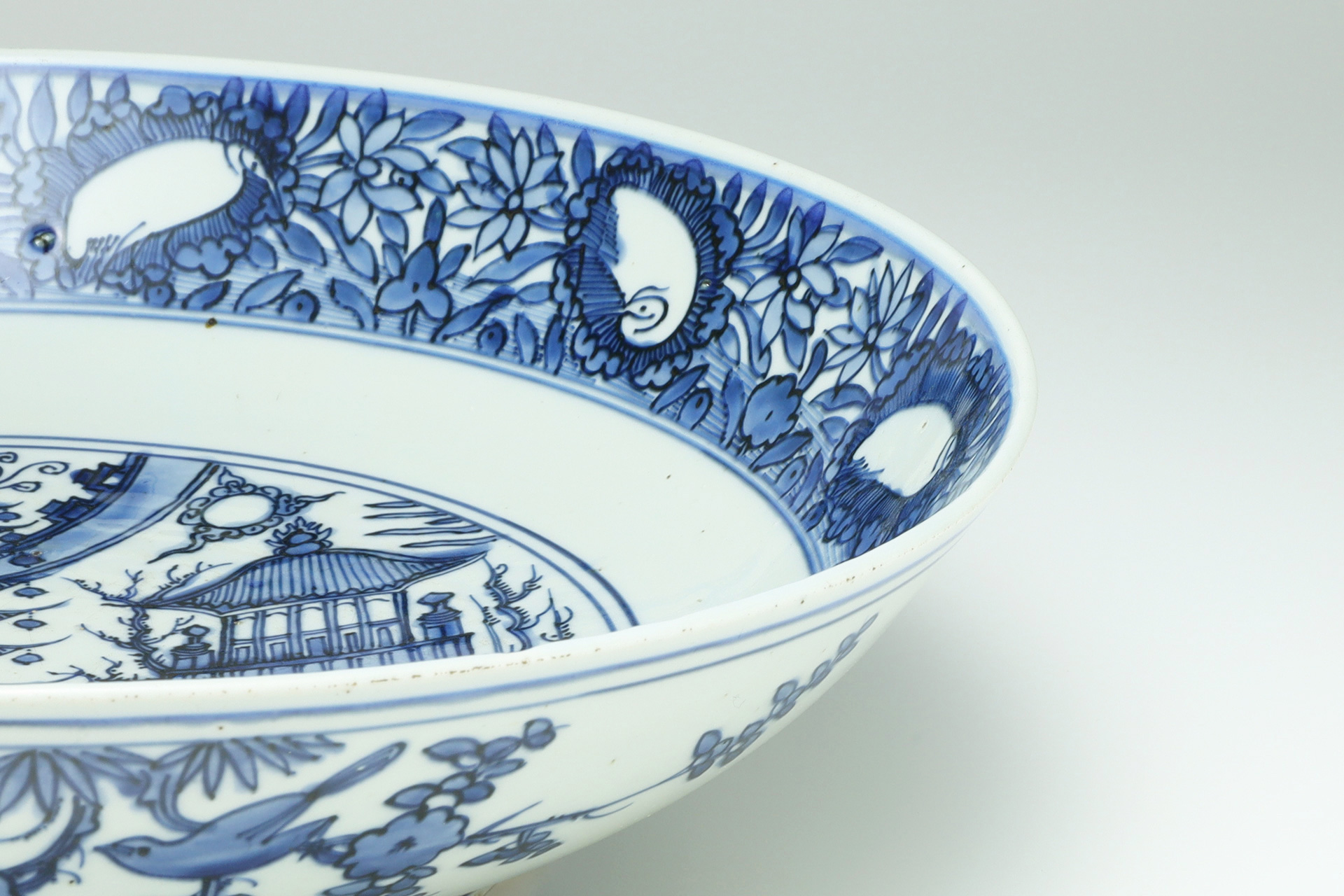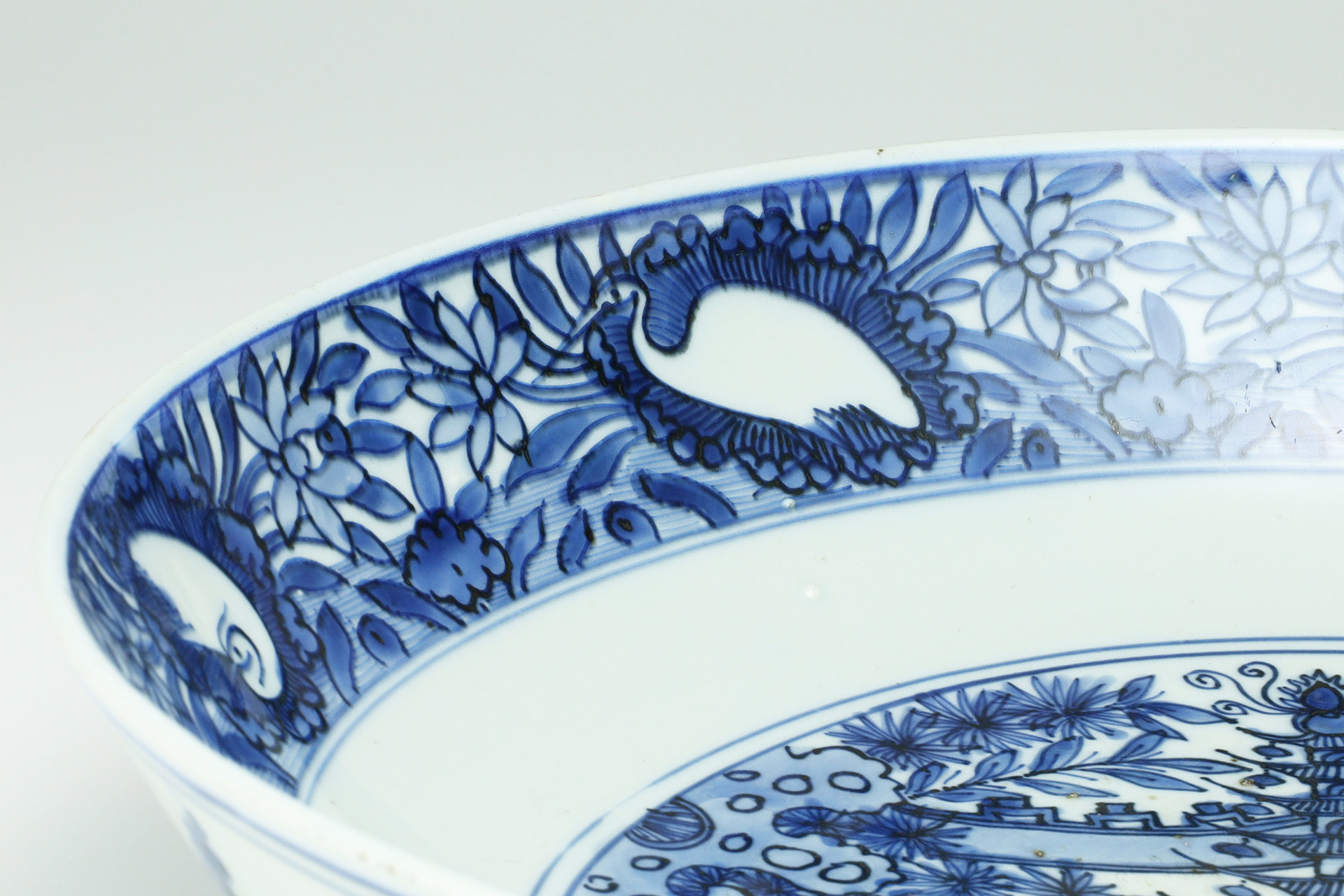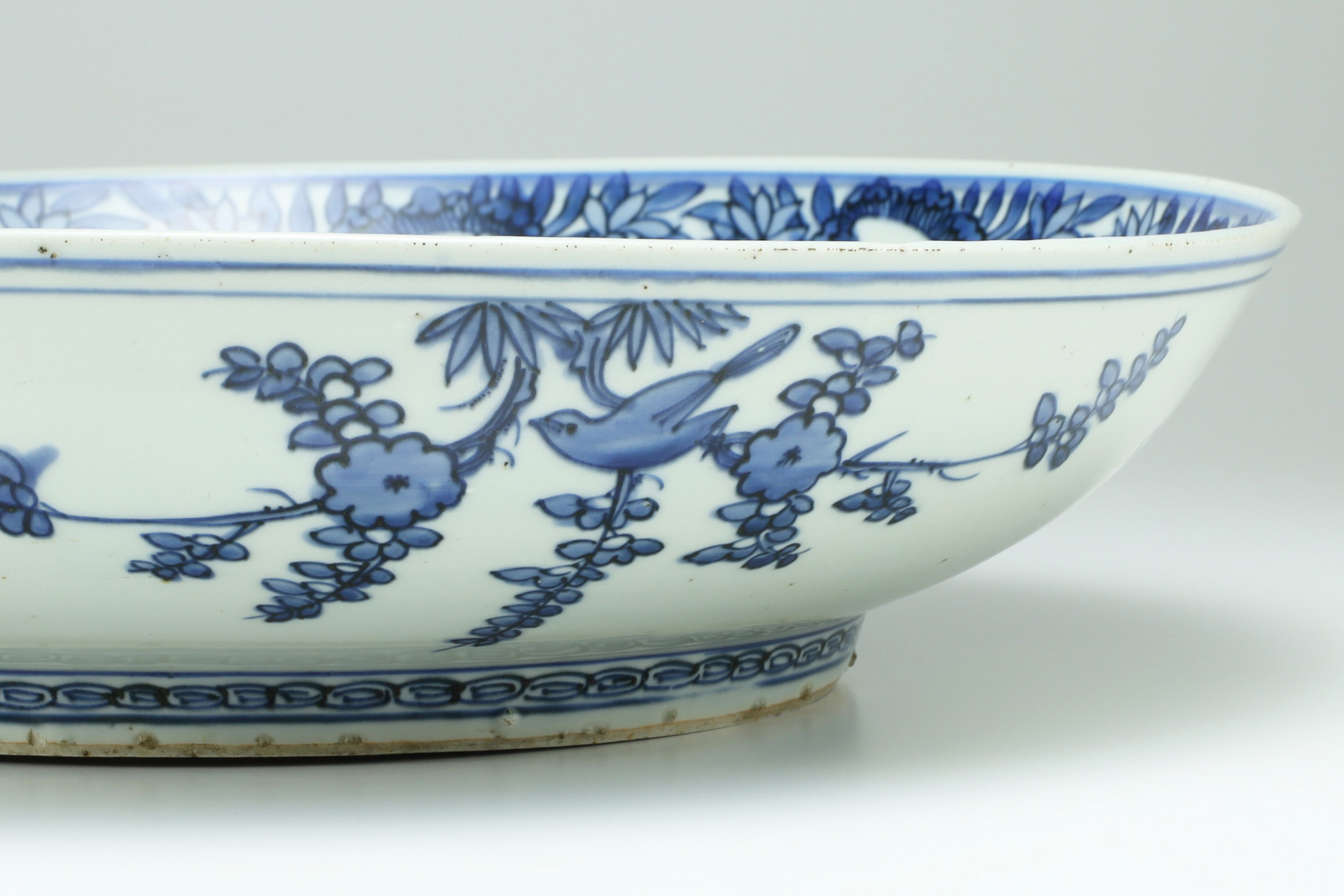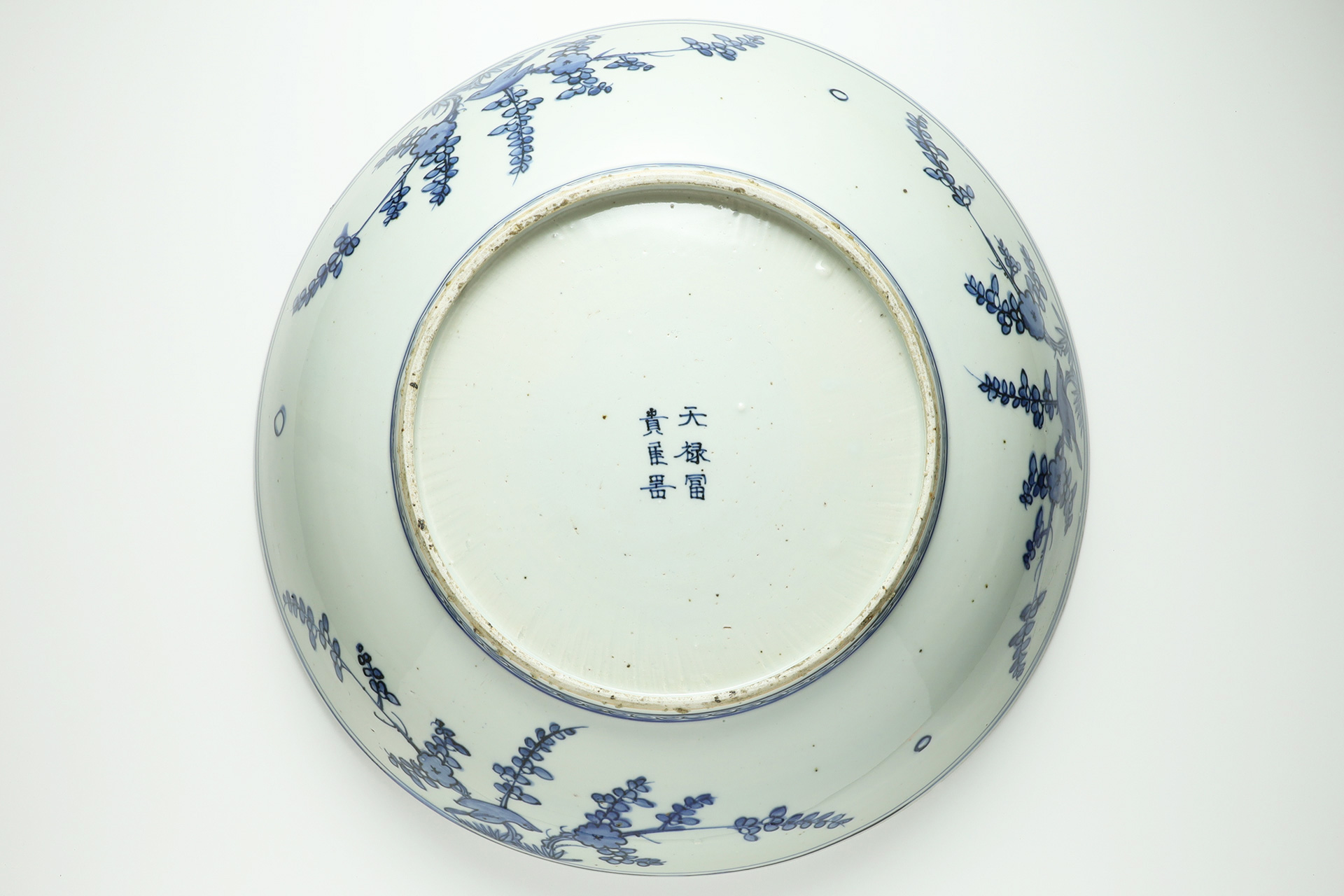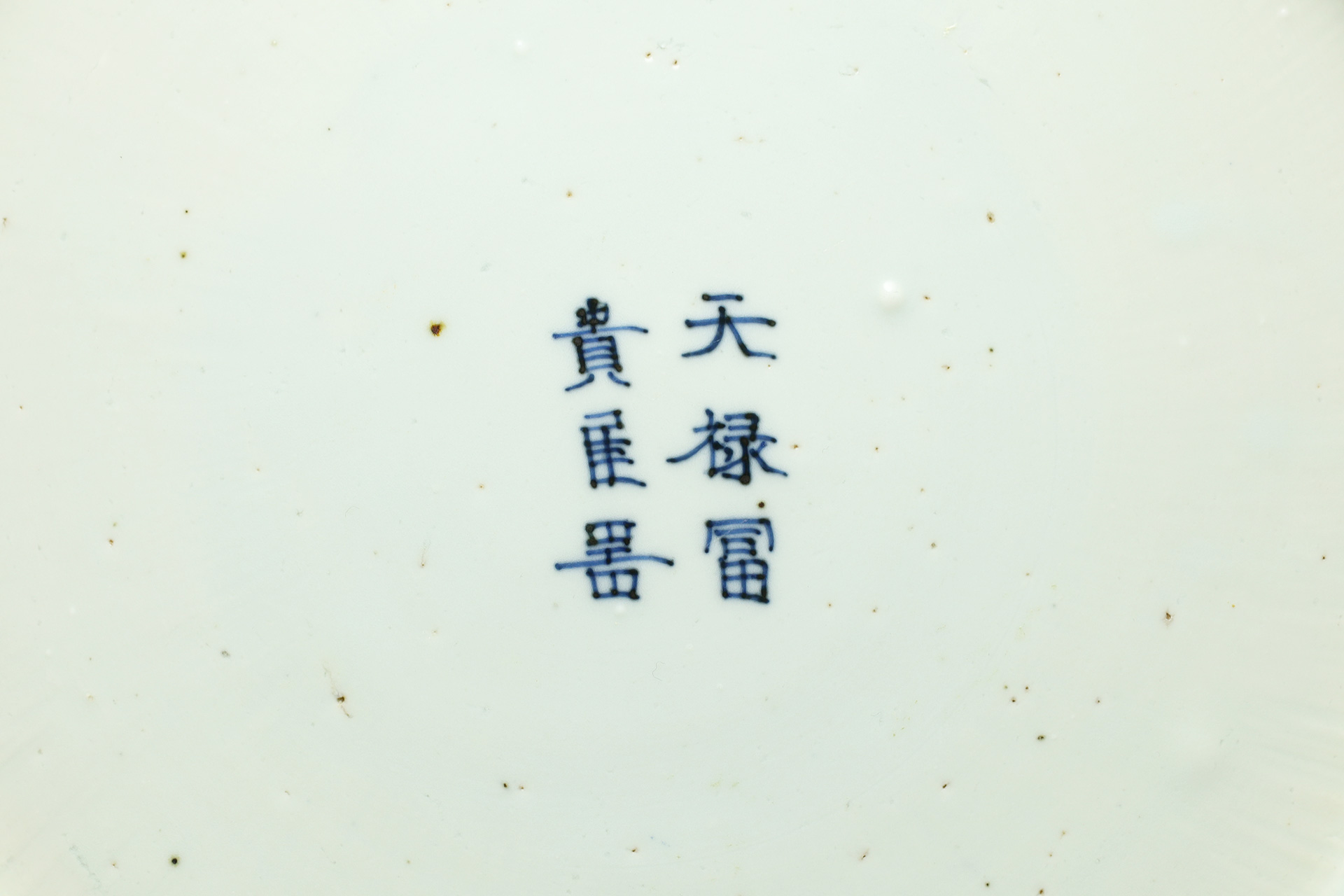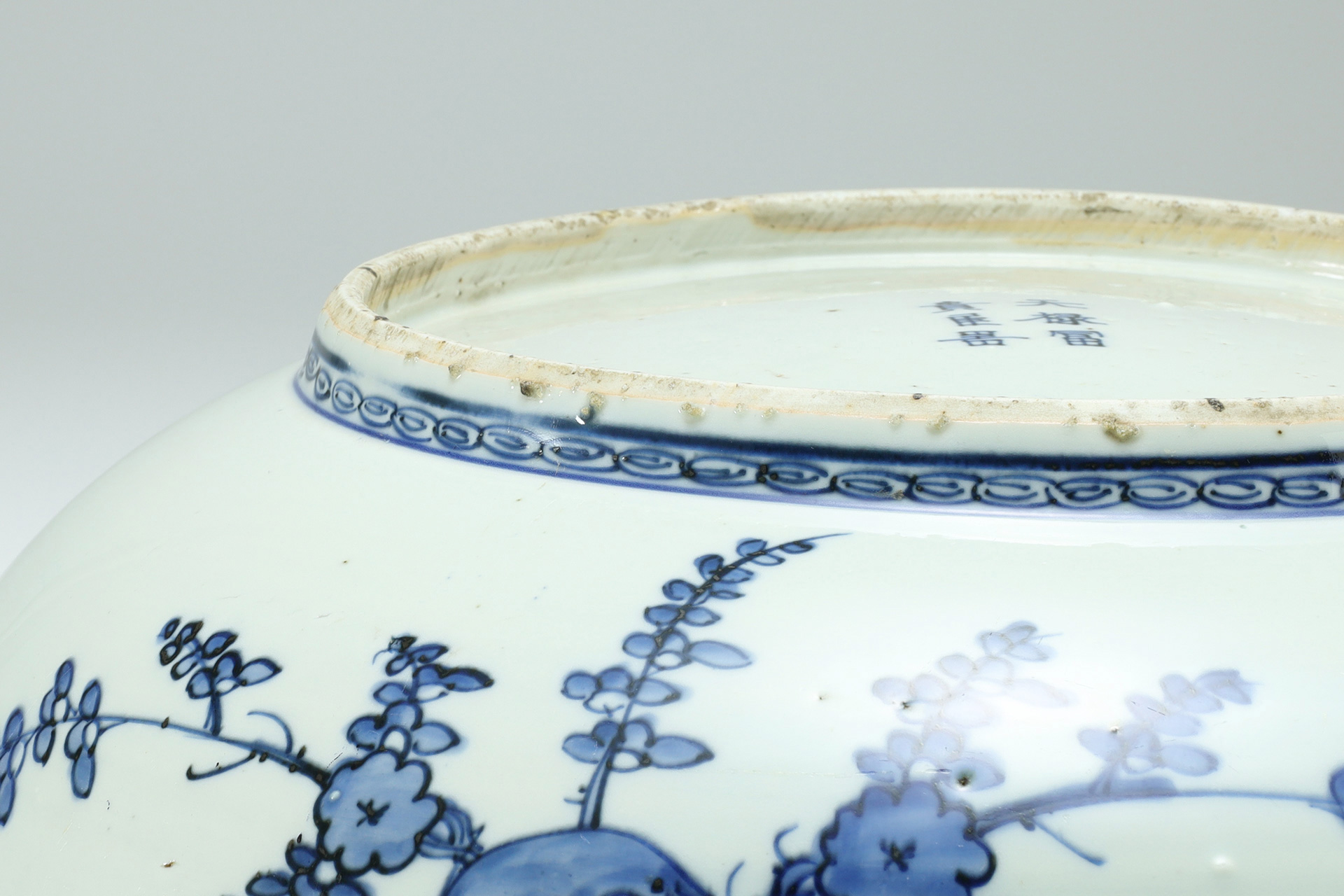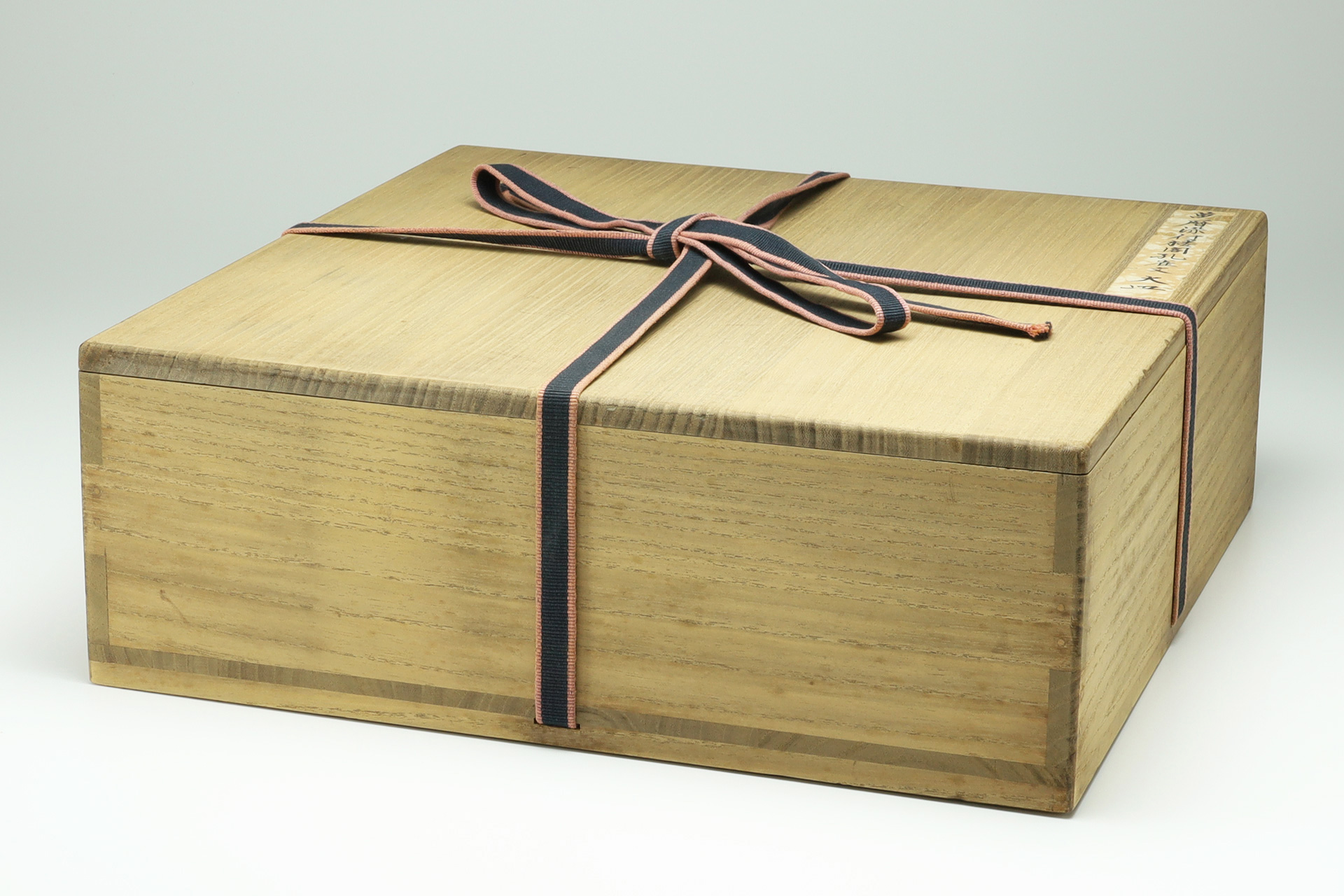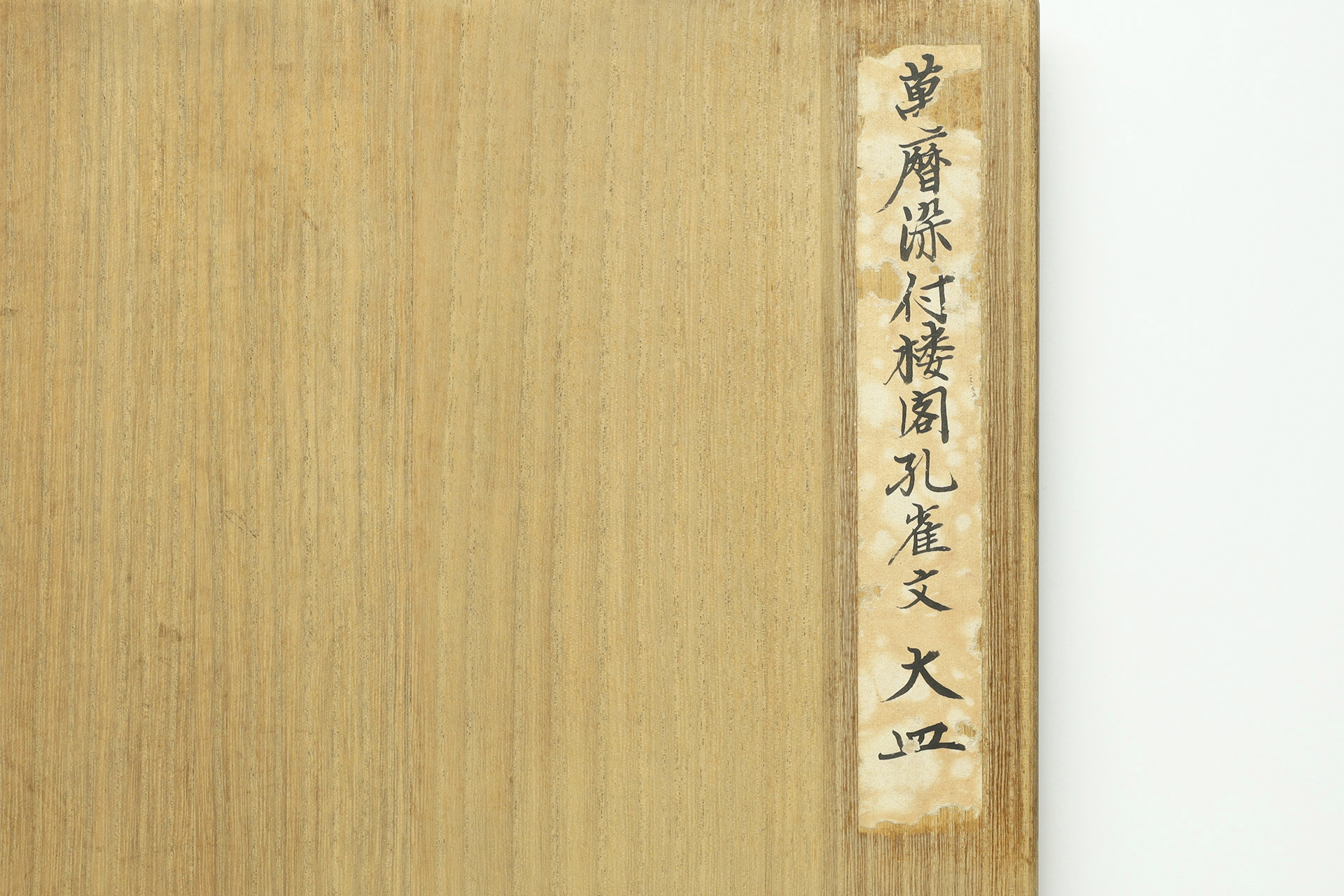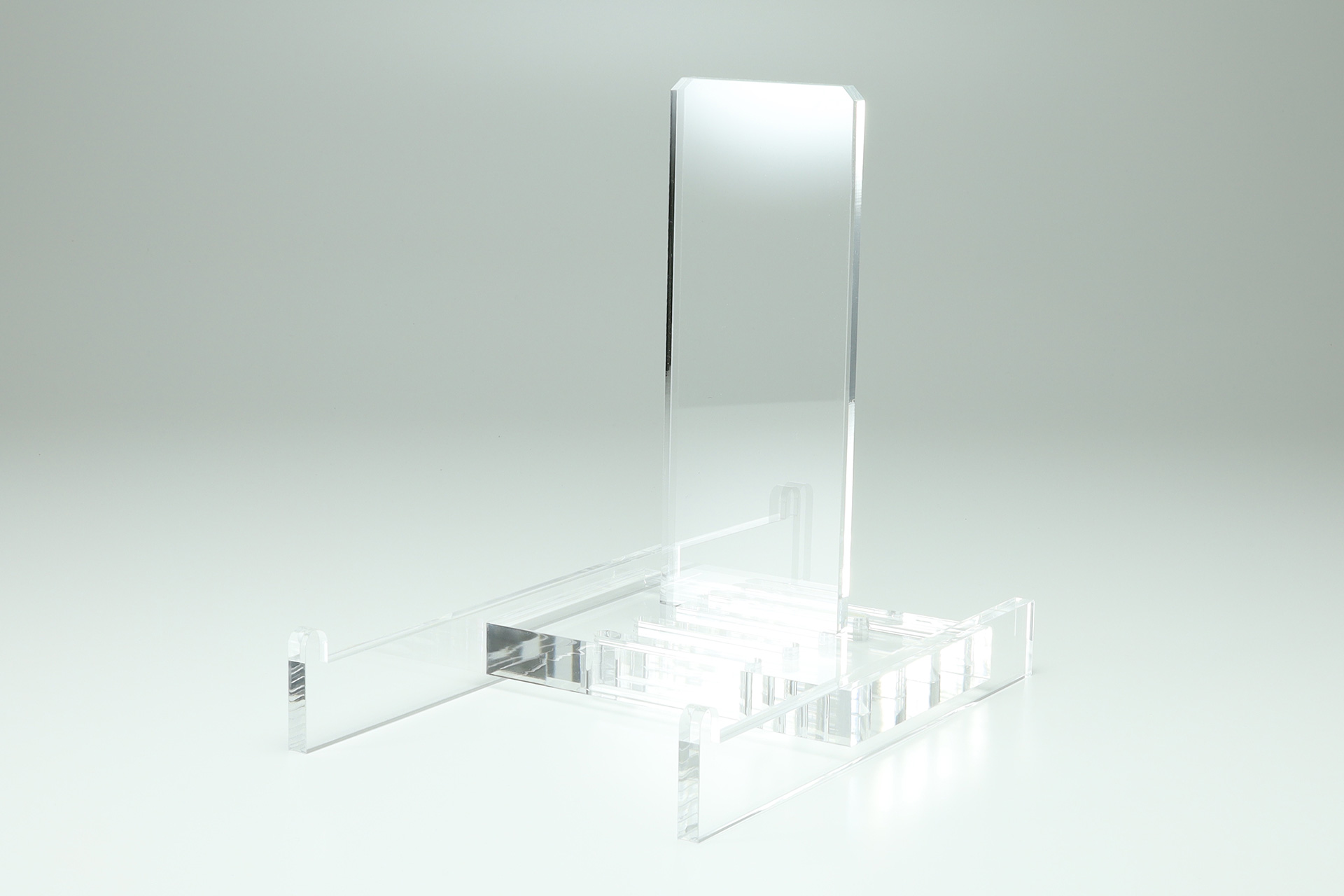Blue and White Porcelain Large Dish with Design of Tower and Peacock(Ming Dynasty)
Sold Out
This is the masterpiece from wanli era with the theme of tower and peacock design. The gorgeous deep blue color stands out on the carefully selected pure white base, and the painting, firing, and condition are all impeccable. Its dignified and graceful appearance gives it an air of solitary spirit. Majestic chinese works have fascinated many people since ancient times as high class works of art.
Inquiry
- Product Code
- 231117-3
- Period
- Ming Dynasty
Wanli
1573-1620
- Weight
- 1,780g
- Diameter
- 36.1cm
- Height
- 8.7cm
- Bottom Diameter
- 20.2cm
- Description
- Paulonia Box
Acrylic Dish Stand
- Provenance
- Kochukyo
- Condition
- Excellent Condition
It meets the requirements of the first class work with its beautiful base, ideal blue and white, and good firing.

This blue and white porcelain was fired in the early wanli era, when good government was in place and the country was stable. From the jiajing era(1522-1566)to the early Wanli era(16th century), gosu imported from the western region was used in government kilns and a few high class private kilns.
It is possible that this work dates back to the jiajing era. Until the early Wanli era, most of the works were of high quality, but in the late Wanli era, when the ming’s national power declined, the style became disordered and the quality of the blue and white porcelain began to deteriorate.
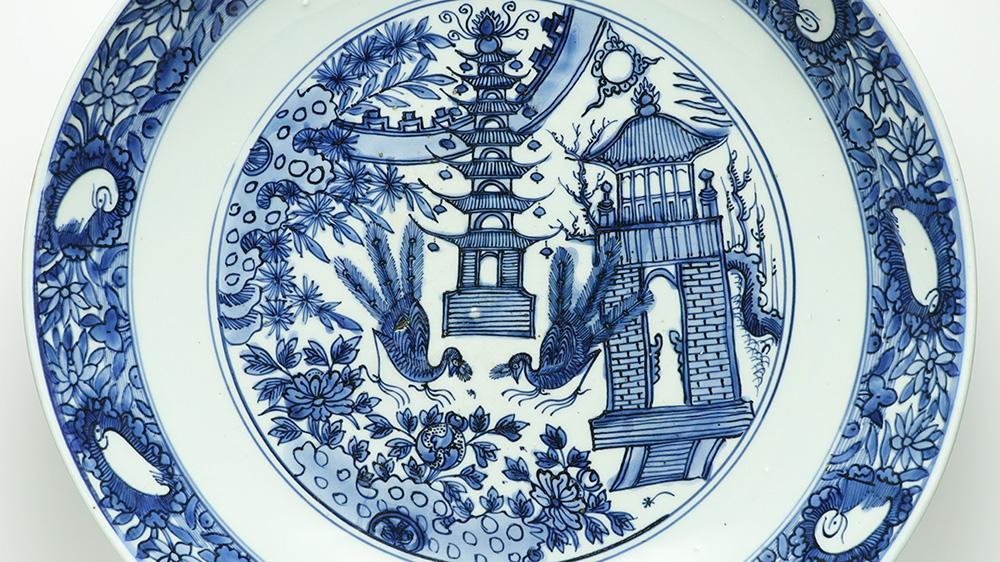
In china, peacock have been associated with peony as auspicious bird. The gorgeous peacock’s appearance is a symbol of wealth, and peony is called the “King of Hundred Flowers” because they are more elegant and luxurious than any other flower.
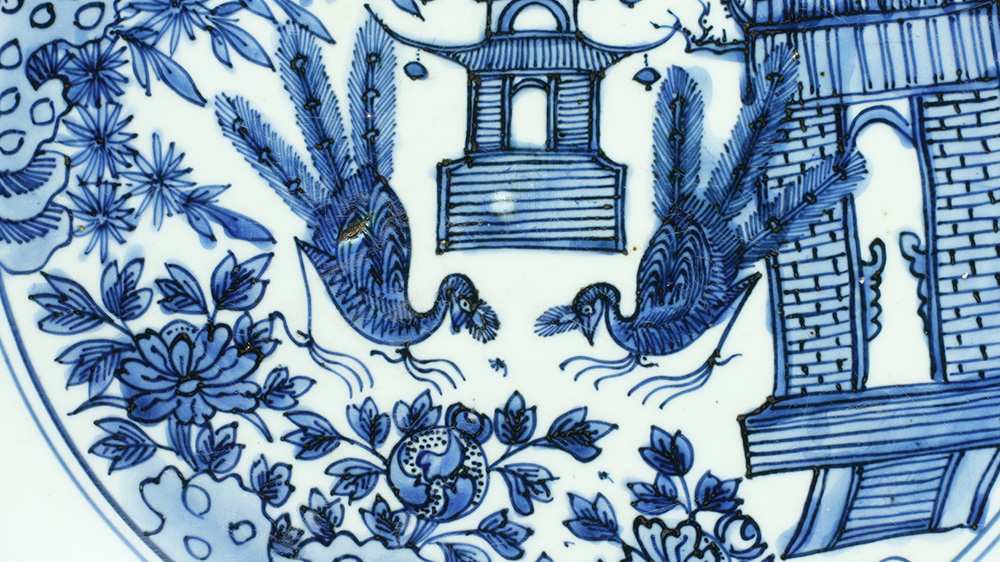
By filling in the contours using gosu’s shading, an elegant atmosphere is created, and the highly sophisticated techniques that can only be expressed by skilled craftsmen are concentrated.
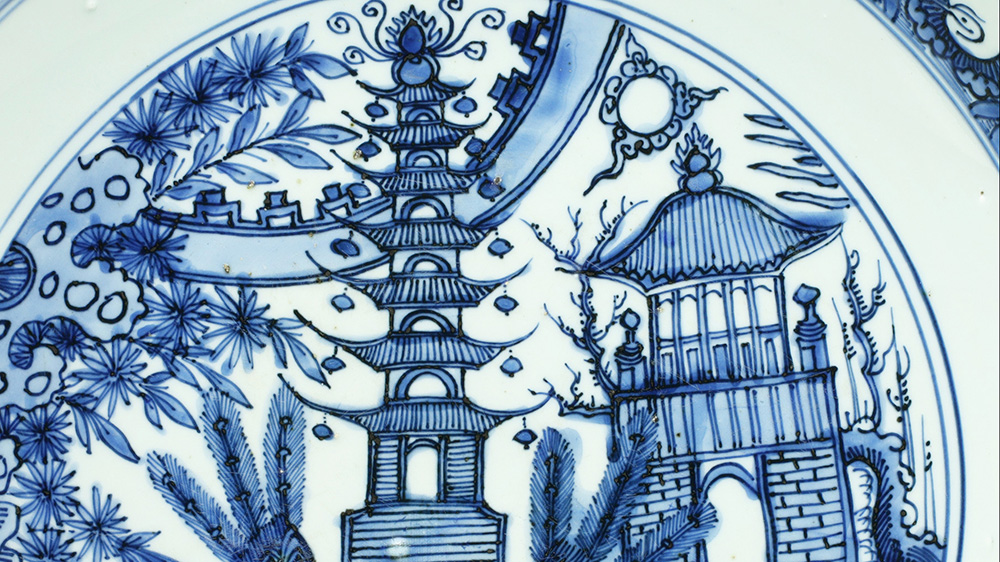
Nine herons are arranged in a lotus pond design. In china, the white heron was loved for its beauty and graceful appearance, and like the lotus, it was a favorite symbol of a noble character that would not be submerged in mud. The design of a heron on a lotus pond is an allegory for success in career success by successively passing the imperial examinations, and was often depicted in paintings and crafts from the song dynasty onwards.
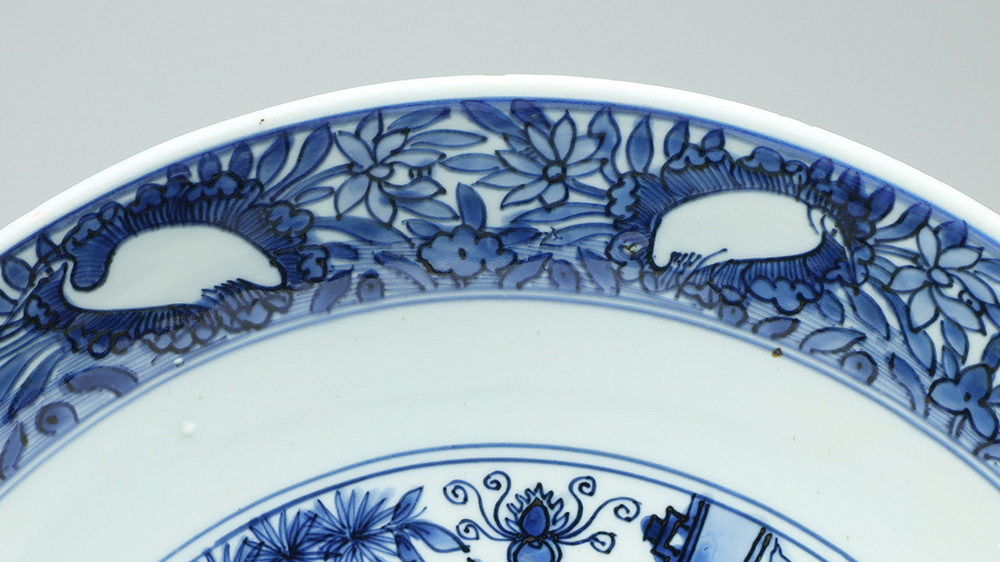
It’s the deep large dish with a heavy feel. Due to the difference in shrinkage rates between the base material and glaze, there is no “Mushikui” where the glaze peels off and the base is exposed, and the high quality can be seen from every corner.
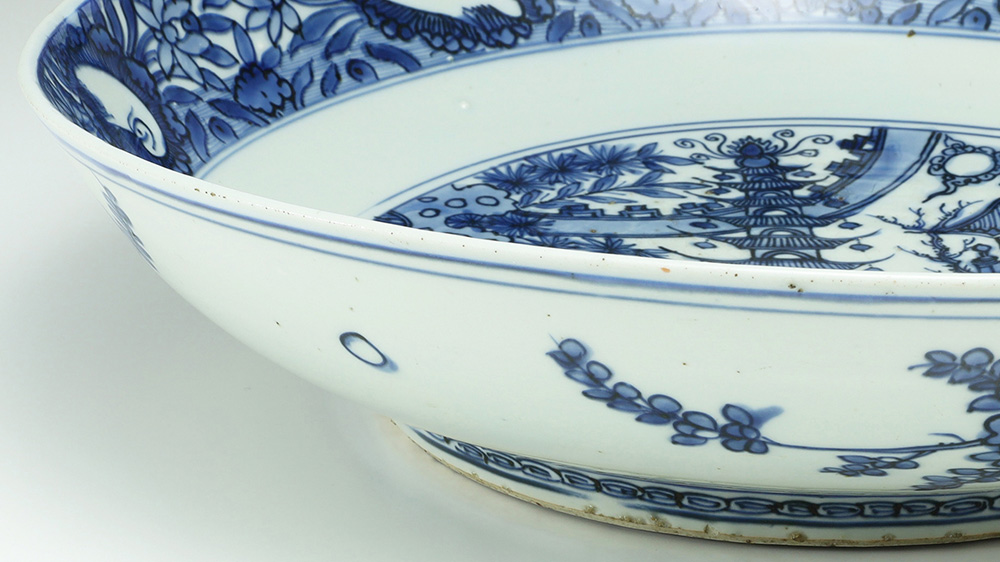
“Tenroku” means happiness bestowed from heaven, and “Fuki-Kaki” means a splendid vessel filled with wealth, and is filled with the wish for good fortune.
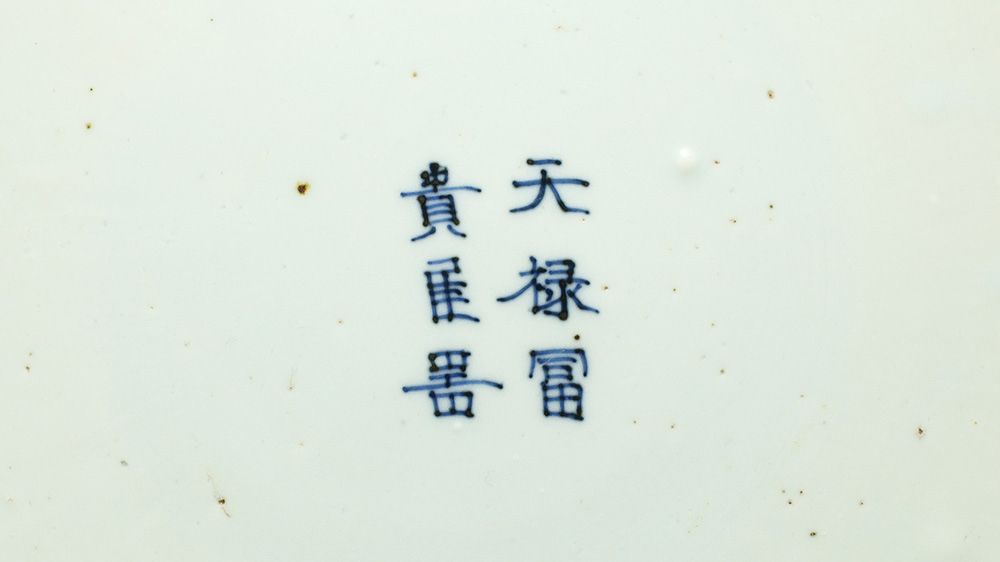
It has a provenance and is handled by kochukyo.
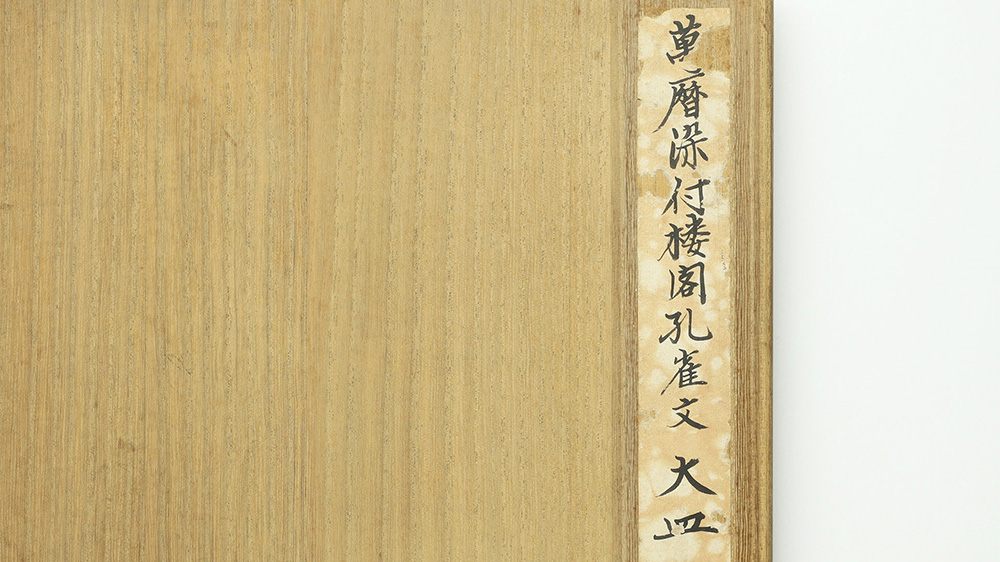
Jingdezhen Kiln from the Wanli Era (1573-1620)
The most common types of works are blue and white porcelain(wanli blue and white)and five colors porcelain(wanli wucai), and monochromatic glazes such as red on white porcelain and green on white porcelain, miscellaneous colors porcelain, and so-sansai are also known. In terms of types, the diversification and larger size that had already been recognized during the jiajing era(1522-66)further progressed. In addition to eating and drinking utensils and ritual utensils, there was a rapid increase in large vase, folding screens, furniture, stationery, and other types of ware that were not traditionally found in porcelains. Complex shapes other than circles, such as squares and polygons, will also become more noticeable. Large vessels and complex shapes are difficult to fire, and although they demonstrate a high level of skill, it is said that this placed a heavy burden on the potters. Emperor Wanli’s reign was long, lasting about 45 years, and the first half was a era of stability and good government following the jiajing and longqing years, so there was little firing of court porcelain, and high quality blue and white porcelain and five colors porcelain were produced. Among them, blue and white porcelain is fired the most, and the proportion of five colors porcelain gradually increases. Around this time, gosu, which had been used during the jiajing era, was used for blue and white porcelain, giving it a bright color, but from the middle of the wanli era onwards, imports ceased and domestically produced gosu was used. For this reason, from the middle of the wanli era onwards, it became a slightly gray indigo color. In the late wanli era, the ming dynasty began to decline as the social economy fell into disrepair due to increased military spending due to wars at home and abroad, a shortage of national treasury, and political corruption. In addition to resource shortages, tight financial conditions force mass production, leading to a decline in quality. Court porcelain also had distorted shapes and overly packed design, and the glaze did not adhere well enough to cause mushikui, where the glaze surface peeled off. However, its unrestrained manner stimulated the aesthetic sense of japanese master of tea ceremony.



